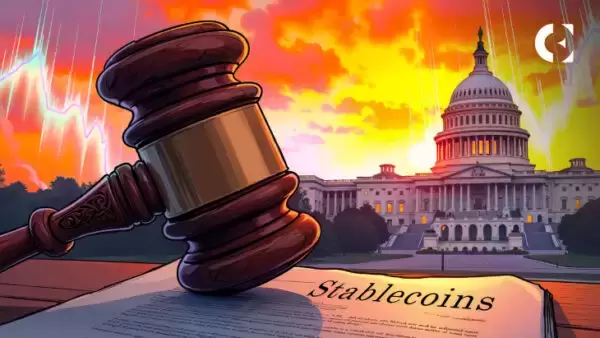 |
|
 |
|
 |
|
 |
|
 |
|
 |
|
 |
|
 |
|
 |
|
 |
|
 |
|
 |
|
 |
|
 |
|
 |
|
分散化はブロックチェーン技術の基礎であり、集中型システムに代わる、より回復力があり検閲に強い代替手段となることが期待されています。しかし、業界をリードするプロトコルは、主張されているほど分散化されているのでしょうか?

Blockchains are touted as decentralized alternatives to centralized systems, promising greater resilience and resistance to censorship. However, a closer examination reveals that the industry's leading protocols may not be as decentralized as they claim.
ブロックチェーンは、集中型システムに代わる分散型の代替手段として宣伝されており、より高い回復力と検閲への耐性が期待されています。しかし、詳しく調べてみると、業界の主要なプロトコルは主張しているほど分散化されていない可能性があることがわかります。
Decentralization can be measured along several dimensions. One straightforward metric is the number of entities participating in a network's validation or block-mining process. However, other factors can also enhance or erode decentralization:
分散化はいくつかの側面に沿って測定できます。簡単な指標の 1 つは、ネットワークの検証またはブロック マイニング プロセスに参加しているエンティティの数です。ただし、他の要因によっても分散化が強化されたり損なわれたりする可能性があります。
The following table compares the degree of decentralization of leading protocols across these dimensions:
次の表は、これらの側面における主要なプロトコルの分散化の程度を比較しています。
Decentralization does come at a cost: the greater the distance between peers, the higher the latency. Latency is critical for validators to complete assigned tasks within a reasonable time frame. Missing these deadlines results in lost rewards for validators, incentivizing them to locate their nodes closer to larger clusters of peers, thereby increasing centralization. Similarly, smaller block sizes or shorter block durations lead to higher centralization incentives.
分散化にはコストがかかります。ピア間の距離が離れるほど、待ち時間が長くなります。バリデーターが割り当てられたタスクを妥当な時間枠内で完了するには、レイテンシが重要です。これらの期限を過ぎるとバリデーターの報酬が失われることになり、バリデーターは自分のノードをより大きなピアのクラスターの近くに配置するよう動機付けられ、それによって集中化が強化されます。同様に、ブロック サイズが小さい、またはブロック期間が短いほど、集中化のインセンティブが高くなります。
In essence, many protocols indirectly penalize decentralization by reducing the rewards for those who deploy infrastructure in territories where no one else is present. These pioneers bear the burden of blockchain resilience with no incentive other than the satisfaction of performing a necessary task in a neglected location.
本質的に、多くのプロトコルは、他に誰も存在しない領域にインフラストラクチャを展開する人々への報酬を減らすことによって、間接的に分散化にペナルティを与えます。これらの先駆者たちは、無視された場所で必要なタスクを実行するという満足感以外に何の動機もなく、ブロックチェーンの回復力の重荷を負っています。
Only a handful of protocols provide some form of predictable and explicit incentives at the protocol level (e.g., higher priority in proposing blocks, increased issuance rewards for participation) to drive network decentralization. In most cases, these incentives are handled as ad-hoc grants or delegations from the protocol foundations to specific network participants.
ネットワークの分散化を推進するために、プロトコルレベルで何らかの形の予測可能で明示的なインセンティブ(ブロック提案における優先順位の向上、参加に対する発行報酬の増加など)を提供しているプロトコルはほんの一握りです。ほとんどの場合、これらのインセンティブは、プロトコル基盤から特定のネットワーク参加者へのアドホックな許可または委任として処理されます。
If decentralization is truly the cornerstone of blockchain's ethos, then the industry must act accordingly. Protocols need to adopt mechanisms that incentivize nodes to operate in diverse jurisdictions, be hosted on independent facilities, and use varied client software (where applicable). Without such incentives, the natural pull of economic efficiency will drive centralization, threatening blockchain's own promise of censorship resistance and resilience.
分散化が本当にブロックチェーン精神の基礎であるならば、業界はそれに応じて行動する必要があります。プロトコルは、ノードがさまざまな管轄区域で動作し、独立した施設でホストされ、さまざまなクライアント ソフトウェア (該当する場合) を使用できるようにするメカニズムを採用する必要があります。このようなインセンティブがなければ、経済効率の自然な引力によって中央集権化が推進され、ブロックチェーン自体が約束する検閲耐性と回復力が脅かされることになります。
The future of blockchain lies in networks that are designed to remain decentralized, not by chance or goodwill, but inherently. Let's ensure that decentralization is not merely an aspiration but a tangible, incentivized reality.
ブロックチェーンの未来は、偶然や善意によってではなく、本質的に分散化を維持するように設計されたネットワークにあります。地方分権が単なる願望ではなく、具体的で奨励される現実であることを確認しましょう。
免責事項:info@kdj.com
提供される情報は取引に関するアドバイスではありません。 kdj.com は、この記事で提供される情報に基づいて行われた投資に対して一切の責任を負いません。暗号通貨は変動性が高いため、十分な調査を行った上で慎重に投資することを強くお勧めします。
このウェブサイトで使用されているコンテンツが著作権を侵害していると思われる場合は、直ちに当社 (info@kdj.com) までご連絡ください。速やかに削除させていただきます。
-

-

-

-

-

-

-

-

- 騒々しい机から始まりました
- 2025-04-03 09:55:12
- これは2015年でした。研究者はベン・フィールディングで、AIを開発するために初期のGPUを詰めた大きな機械を建設しました。
-




























































